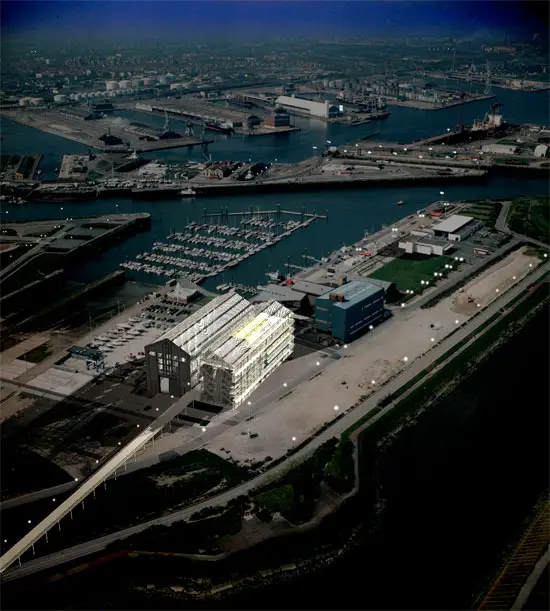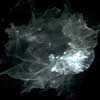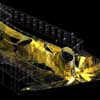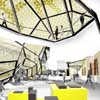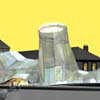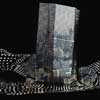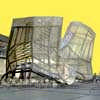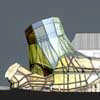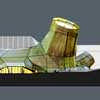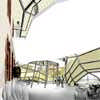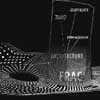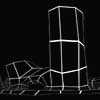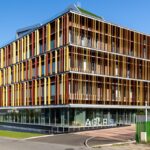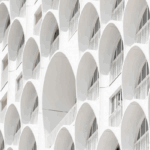FRAC Centre Orleans Building, France, Architect, Images, Architecture, Info, Design
FRAC Centre Orléans, France
Orleans Building – design by Jakob+MacFarlane Architectes
29 Oct 2013
FRAC Centre Event
MÉDIATHÈQUE D’ORLÉANS
Lacaton & Vassal
Mardi 29 octobre 2013 à 18h
Anne Lacaton will present the approach of her design studio Lacaton & Vassal
Projet du Frac Nord-Pas-de-Calais:
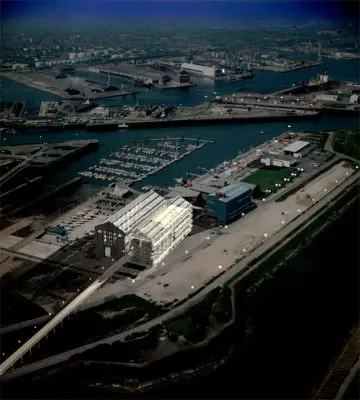
picture Courtesy Lacaton & Vassal
The FRAC Center and the House of Architecture in the Center invite you to the cycle of conferences
‘ARCHITECTURE + EXPERIMENTATION’
This cycle of conferences aims to highlight the unique words of architects developing forward-looking and innovative projects.
Anne Lacaton will present the approach of her agency Lacaton & Vassal, which, since its beginnings, has been oriented towards identifying all the potential for the evolution of a site or the re-use of existing architectural and urban situations. The idea of an open and intelligent container, which creates freedom of use, flexibility and renewal without conformism applies to many of their creations.
This conference will notably present news from the agency through the construction of the Frac Nord Pas-de-Calais, located near the port of Dunkirk, in a former industrial hall (boat hall), which will open in November 2013. .
A graduate of the Ecole Nationale Supérieure d’Architecture de Bordeaux in 1980 and of the University of Bordeaux in urban planning in 1984, Anne Lacaton joined forces with Jean-Philippe Vassal in 1987 and together they created the Lacaton & Vassal. The agency has been nominated several times for the Équerre d’argent du Moniteur. Anne Lacaton and Jean-Philippe Vassal are winners of the Grand Prix National de l’Architecture. They are notably the architects of the Palais de Tokyo.
Auditorium Reggui (Entrée côté rue Chanzy)
1 place Gambetta
45043 Orléans cedex 1
www.bm-orleans.fr
The Turbulences FRAC Centre, Orléans, France – 25 + 2 Sep 2013
14 Mar 2013 Le FRAC Centre et la Maison de l’Architecture du Centre Event, Orléans, France
2 Apr 2013 6pm
Didier Faustino
Mardi 2 avril 2013 à 18h
Didier Faustino – The Broken High-Rise, 2012:
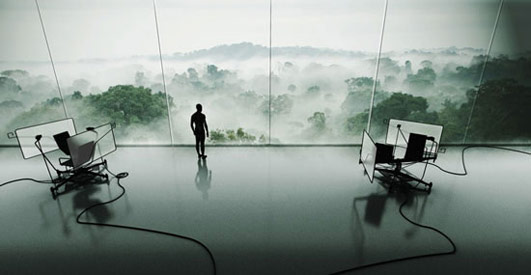
picture Courtesy Didier Faustino and Galerie Michel Rein, Paris
This lecture cycle aims to put forward the unique word of architects developing long-term and innovating projects.
Le FRAC Centre et la Maison de l’Architecture du Centre
vous invitent au cycle de conférences
ARCHITECTURE + EXPÉRIMENTATION
Text in French only:
Ce cycle de conférences a pour ambition de mettre en avant la parole singulière d’architectes développant des projets prospectifs et innovants.
La pratique de Didier Faustino se situe entre art et architecture. Architecte de formation, il s’intéresse également aux arts visuels en créant notamment, des installations, performances et vidéos. La question du corps est pour lui inhérente à la construction d’objets, d’espaces et de bâtiments. En 2008, il réalise the Tea House en Corée du Sud, construction modulaire à 20 mètres de hauteur permettant de surplomber le paysage environnant. Avec son installation en 2011 à la Cité de l’Architecture et du Patrimoine de Paris, il s’interroge sur la création d’un espace où doivent être privilégiés les échanges.
Diplômé de l’École Nationale Supérieure d’Architecture de Paris Villemin (1995), Didier Faustino (1968) exerce aussi une activité d’enseignement et dirige notamment la Diploma Unit 2 à la AA School de Londres depuis 2011. Il a été invité à trois reprises à la Biennale d’Architecture de Venise.
Auditorium Reggui (Entrée côté rue Chanzy)
1 Place Gambetta
45043 Orléans cedex 1
www.bm-orleans.fr
FRAC Centre Exhibition
Exposition Bertrand Lamarche, FRAC Centre, France
18 Feb – 27 May
Text in French only:
Deux expositions monographiques sont consacrées en région à l’artiste Bertrand Lamarche, au CCC (Tours) et au FRAC Centre (Orléans).
C’est l’occasion pour les deux institutions de porter des regards croisés sur sa démarche artistique.
Depuis de nombreuses années, Bertrand Lamarche interroge à travers des formes diverses (sculptures, performances, photographies ou installations) les relations entre mouvement, son et lumière. Ses œuvres témoignent d’un intérêt généralisé pour les questions de représentation, d’échelle et leurs distorsions, puisant aussi bien dans l’urbanisme que dans l’observation de phénomènes météorologiques. Il condense des imaginaires aussi variés que la science-fiction, le cabaret ou le cinéma et s’appuie sur l’amplification et sur le potentiel spéculatif de figures qu’il convoque régulièrement dans ses travaux depuis près de 20 ans.
Au FRAC Centre, les œuvres présentées sont autant d’expériences vertigineuses induites par des projections lumineuses, brume ou dispositifs mécaniques illusionnistes. The Fog Factory (2005, coll. FRAC Centre) se donne comme la maquette-modèle de la gare de Nancy, immergée dans la brume, qui transforme la maquette en architecture entropique. L’installation luminocinétique La Réplique (2008, coll. FRAC Centre) nous renvoie aux expériences optiques du début du XXe siècle. Tore (2000, coll. Agnès B) projette une galaxie tourbillonnante de lumière. Le Terrain ombelliférique (2005), en négatif de l’installation exposée au CCC, est une promenade virtuelle dans un jardin d’ombelles géantes où basculent les échelles de représentation.
Ces installations provoquent une perte de repère spatiale et temporelle, plongeant le spectateur dans une atmosphère fantasmagorique dans laquelle l’architecture n’est plus que projection.
En collaboration avec le CCC (Tours)
Du 18 février au 27 mai 2012
Plus d’information : www.ccc-art.com
Photographie : Cédrick Eymenier
FRAC Centre Orléans
2009-
Design: Jakob+MacFarlane Architectes
Implantation du Fonds régional d’Art Contemporain sur le site des subsistances militaires d’Orléans
Turbulence
The architectural parti is to take the entire site, which determines the surface of intervention. We identified two predominate grids emanating from the historic context of the site. The meeting and the convergence of these two geometries materialises in a deformation, a zone of turbulence, the future presence of the FRAC Centre.
The inner court is treated like a public space, linking all the buildings and carrying the program of the FRAC. Our intention is to create not only a landscape but a topographic surface. This surface follows the interferences of the two building grids and accommodates the natural slopes the site towards the entries of the different programs of exhibition spaces.
The volumes created by the meeting of these geometries are extruded vertically and stretched over the court and toward the city. They are organised into three parts and conceived to be simple and facetted in form, a language derived from the fusion of the grids of the site.
These “turbulent” extrusions each contain an element of the program: the first and tallest a temporary exhibition gallery with its accompanying scenographic spaces, the smallest an audiovisual gallery, and the third the welcome lobby, sales space, and a convivial social space which extends out into the court. This central space is an intersection, a place of meeting and exchange, material and immaterial. This ambulatory space leads the public to the temporary and permanent exhibition spaces and research areas.
The exterior and interior skins of the intervention are fine metallic and textile meshes which convey a perpetually modifying flow of information. The idea is to create a building which continually describes the process of creation, disappearing behind the lines which were drawn only to reappear in volume, a three dimensional image, the materialisation of architecture. Volume, light and image fuse together to create a dynamic form of architecture of information.
These digital surfaces are addressed to the city and, as such, the building surface transcribes flows of information into light images through an intervention of Electronic Shadow. These flows of information can be the weather, connections to their internet site or any capturable flow of real time information.
The light surface of the building is simultaneously an architectural and artistic intervention, an urban signal, and signage of the buildings’ activities. This idea is also pursued in the interior under the form of a dynamic system of signage. The objective is to give the FRAC a tool that is sized by its public dimension, open and visible.
By its new open urban façade, obtained through the demolition of the existing building on the Boulevard Rocheplatte, the FRAC Centre is connected to the urban cultural promenade of Orleans, the interior court thus becoming a public plaza. We have displaced the centre of gravity to the heart of the site. The new architectural intervention is the new point of gravity, a new structure, a new geometry and a new departure for the site, creating an architecture with a new presence that communicates a welcoming, an opening, and a vision for both the public and researchers. The project explains itself through its extraverted nature.
These “turbulences” are to be investigated as a metaphor, inspiring the architecture which is in turn exuded to the public or passers-by along the edges of the site.
The language of these turbulences was born of the site. We want this project to be as a creation of the site itself, practically “self-created” from site conditions, thus describing all the acting forces.
It is a project full of life, communicating, revealing, provoking, stimulating and informing.
Light images by Electronic Shadow
FRAC centre backyard garden competition, Orléans, France
Bassinet Turquin Paysage – 2nd prize design
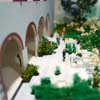
image from landscape architects
FRAC Centre Garden
Location: Orléans, France
New Buildings in France
French Architectural Projects
French Architect Offices – design firm listings
Paris Architecture Tours by e-architect
French Architecture – Selection
Théâtre “Legendre” in Evreux
Design: OPUS 5 architectes
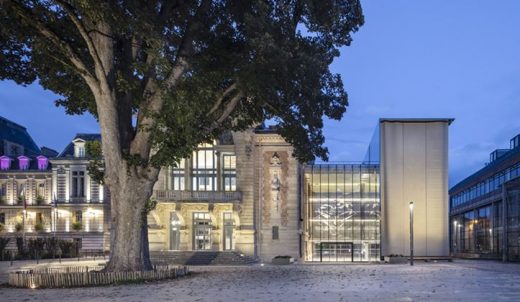
photo : Luc Boegly
Théâtre Legendre Evreux
MEETT Exhibition and Convention Centre, Toulouse, southern France
Design: OMA
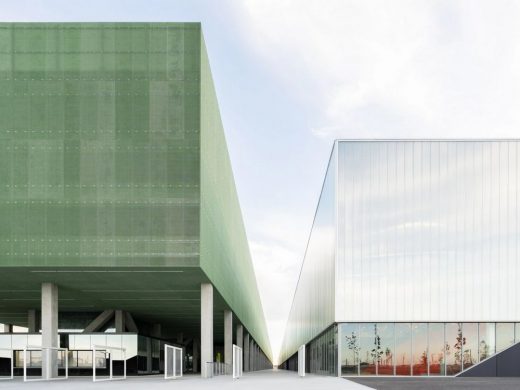
photograph : Marco Cappelletti, Courtesy of OMA
MEETT Exhibition and Convention Centre
Another French architecture centre on e-architect:
Arc en Rêve Bordeaux Architecture Center
Comments / photos for the FRAC Centre Orléans page welcome

